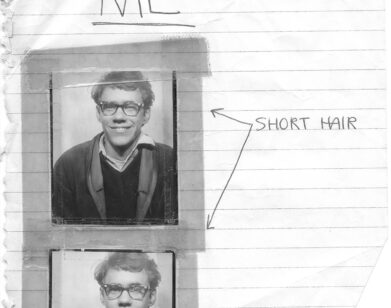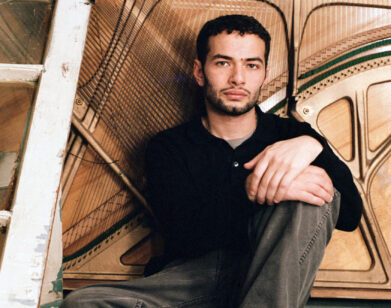Maurizio Cattelan
In 2011, artist Maurizio Cattelan famously vowed that he was retiring from making art, transforming his retrospective of iconic satirist sculptures dangling in the rotunda of New York’s Guggenheim into something of the artistic equivalent to a rock band’s farewell tour. But even then, Cattelan was already pursuing a second career. He was the co-founder—and co-editor and co-image-maker along with photographer Pierpaolo Ferrari—of Toilet Paper, a magazine that is a wild photographic odyssey of surrealist misbehavior, shot with a high-fashion aesthetic and a mind for tumult, distaste, hilarity, hijinks, and a no-holds-barred culture-war mentality. (A 21st-century glossy version of Luis Buñuel and Salvador Dalí‘s Un Chien Andalou [1929] seems an apt description.) In other words, the imagery was pure Cattelan set in ink.
If photographs still have the power to outrage (or at least demand a second look), then this profane inventory that Toilet Paper has provided may be its last hope. Toilet Paper, which is in fact Cattelan’s third magazine—previously he published Permanent Food and Charley—is described by the 52-year-old Italian artist himself as “the representation of the digestive process following an overdose of images.” Whether or not one likes to picture an image-gorged reader enjoying one of the six thus-far-released issues on the toilet, the retrospective book, Toilet Paper (Freedman Damiani) due out in December, is far more suitable for the coffee table than the john.
Toilet Paper, the book, began somewhat by accident in 2009, when Dennis Freedman, then creative director of W magazine, commissioned Cattelan to create a series of images for their art-themed issue. “The photographs were some of the most powerful that we ever published,” recalls Freedman, now creative director of Barneys. “I can probably say it was the only time that Linda Evangelista ever ended up crawling on the floor on her hands and knees with bland, white legal envelopes between her teeth.” From that first project, Toilet Paper was born. “I am fascinated by the idea of employing beautiful images as a device to convey something extremely disturbing in an apparently harmless way,” Cattelan says. “There is no specific frequency. To make a good issue, we first need to get obsessed with images in our minds until they’re ready to come to life on paper . . . And this process is utterly irregular!”
Over the years, Cattelan has often asked Freedman to help edit the images for Toilet Paper, and for such routine collaboration, Freedman has been awarded the title of “Mascotte” on the magazine’s masthead (super-collector Dakis Joannou is listed below him as “Stuntman”). “Receiving that title is one of the high points of my career,” Freedman says. The Mascotte was called in to be creative director of the magazine’s retrospective book, which involved not only working to select among the myriad unsettling pop (or is it anti-pop disguised as pop?) imagery, but also figuring out a sensible text component that would fit the anti-narrative of the magazine’s rich photography. “We hit on the idea to include a collection of random texts that related conceptually rather than literally to the images,” Freedman explains. “We were very lucky to have found James Hoff to help us gather those texts. He did an extraordinary job finding the most obscure, but totally relevant, pieces of writing. I am especially fond of one that appeared in The New York Times with the tragic headline ‘12 Killed When Tank of Molasses Explodes.’ And there is another one with a unique fashion twist from the New York Post, headlined ‘Spanish Smugglers Molded Cocaine Into Manolo Blahnik Replicas.’ ”
While Cattelan is a less vocal these days about his refusal to re-enter the visual-art arena (“I’m not going to vow anything,” he says. “You can never tell what will be next”), he has already begun work on a seventh issue of Toilet Paper, and continues to co-curate (or co-curate the curators for) his Chelsea window gallery, Family Business, alongside Massimiliano Gioni. Clearly, Cattelan is nowhere near leaving our artistic and visual sensibilities alone. “I would say that working with Maurizio is a kind of mad, disjointed, lyrical trip that goes up and down, over and around, and finally through the woods to a place that you never knew existed before,” Freedman says. A more accurate description of Cattelan’s mind has not been uttered. But for those who still want to know what’s really going on upstairs for the famously hard-to-pin-down Italian master, Freedman asked Cattelan to complete the Jasper/Goldberg Adult ADD/ADHD Screening Quiz. Cattelan obliged. In the spirit of Toilet Paper‘s ADHD-esque approach to binge-and-purge neurotic creation, feel free to take the test yourself to see how own your level of distraction compares to that of Maurizio Cattelan. Warning: For entertainment purposes only. We take no responsibility for your ADHD diagnosis.







